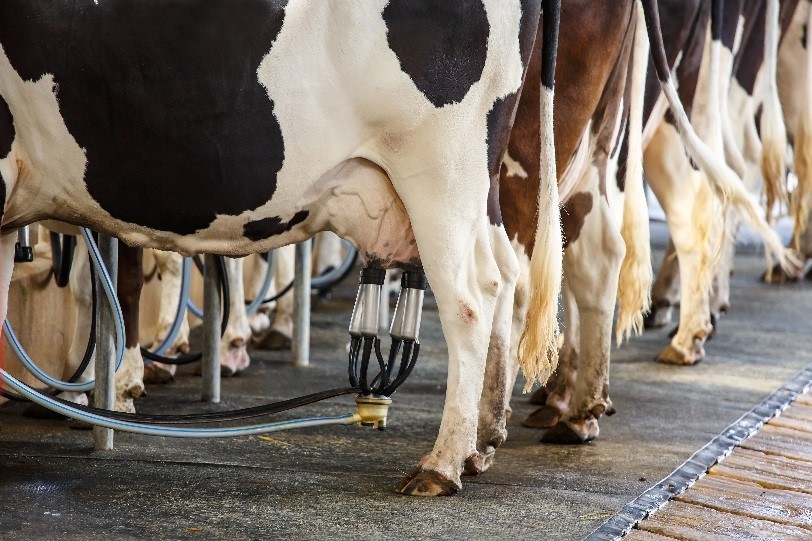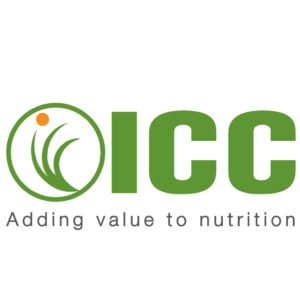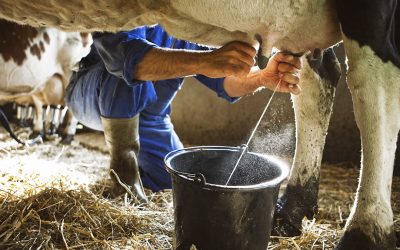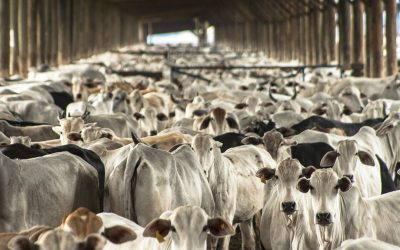Optimising milk fat strengthens dairy profits

In the current international dairy market, increasing milk production quantity is no longer relevant due to low prices. Now more than ever, producing more milk fat and protein is a proven way to enhance herd profitability. Promoting rumen fermentation, with a particular focus on fibre digestion, is the best way to do this.
Fat found in milk originates from 3 sources:
- de novo fatty acids synthesised in the milk gland of the cow (short chain C4 to C14) comprise about 20-30% of total milk fatty acids,
- preformed fatty acids (long chain C18:0, C18:1 and C18:3) represent 35-40%, and
- the mixed group of fatty acids (C16) make up about 35%.
Research has shown that the percentage of milk de novo fatty acids is positively correlated with the percentage of fat and true protein in the milk. It has also been indicated that these short chain fatty acids explain nearly 50% of the variation in milk fat percentage and as much as 68% of the variation in milk true protein. De novo fatty acids are crucial and can be used to monitor herd management.
Key drivers of dairy profitability
Indeed, milk fat and protein are 2 key drivers of dairy profitability positively related to net milk income over feed costs. The quantity of de novo fatty acids reflects rumen functioning, especially fibre fermentation which produces acetate and butyrate, the building blocks of fatty acids. The relative proportion of de novo fatty acids in milk fat reflects how well the cow is being fed and managed for optimal rumen fermentation. Higher de novo fatty acids in the milk reflect healthier rumen conditions.
The intrinsic digestibility of the forage fibre is a function of plant genetics, maturity at harvest and growing environment, which determine the amount of lignin. Rumen pH has a large impact on the fibre fermentation. Thus, poor feeding management can influence rumen pH and subsequent fibre digestion and microbial protein production. Furthermore, recent research has shown that feeding or management practices reducing pH results in accumulation of CLA isomer that has a powerful milk fat depressing effect. So, the question is what management practices enhance rumen conditions as reflected by de novo fatty acid content of the milk?
Fatty acids profiles evaluated
A study run in 2014 and 2015 utilised data collected from over 70 farms in northern New-York and Vermont assessing management and feeding practices, and this information was compared with bulk-tank milk composition. By evaluating fatty acid profiles, herds were categorised as either high or low de novo herds. The major factors consistently associated with greater de novo milk fatty acid content and higher milk fat and true protein content are presented in the infographic.
5 Major factors associated with greater de novo milk fatty acid content.

In conclusion, butterfat levels in milk are affected by various factors. The sources of these fatty acids include de novo (synthesised), preformed, and mixed fatty acids. Factors affecting de novo fatty acids have proven significant and account for much of the milk fat variability, the greatest of which appears to be rumen pH.
Attention to the management and nutritional factors previously listed can help support pH and milk fat levels.
Authors: Stephen B. Blezinger, and Melina Aparecida Bonato, ICC Brazil






